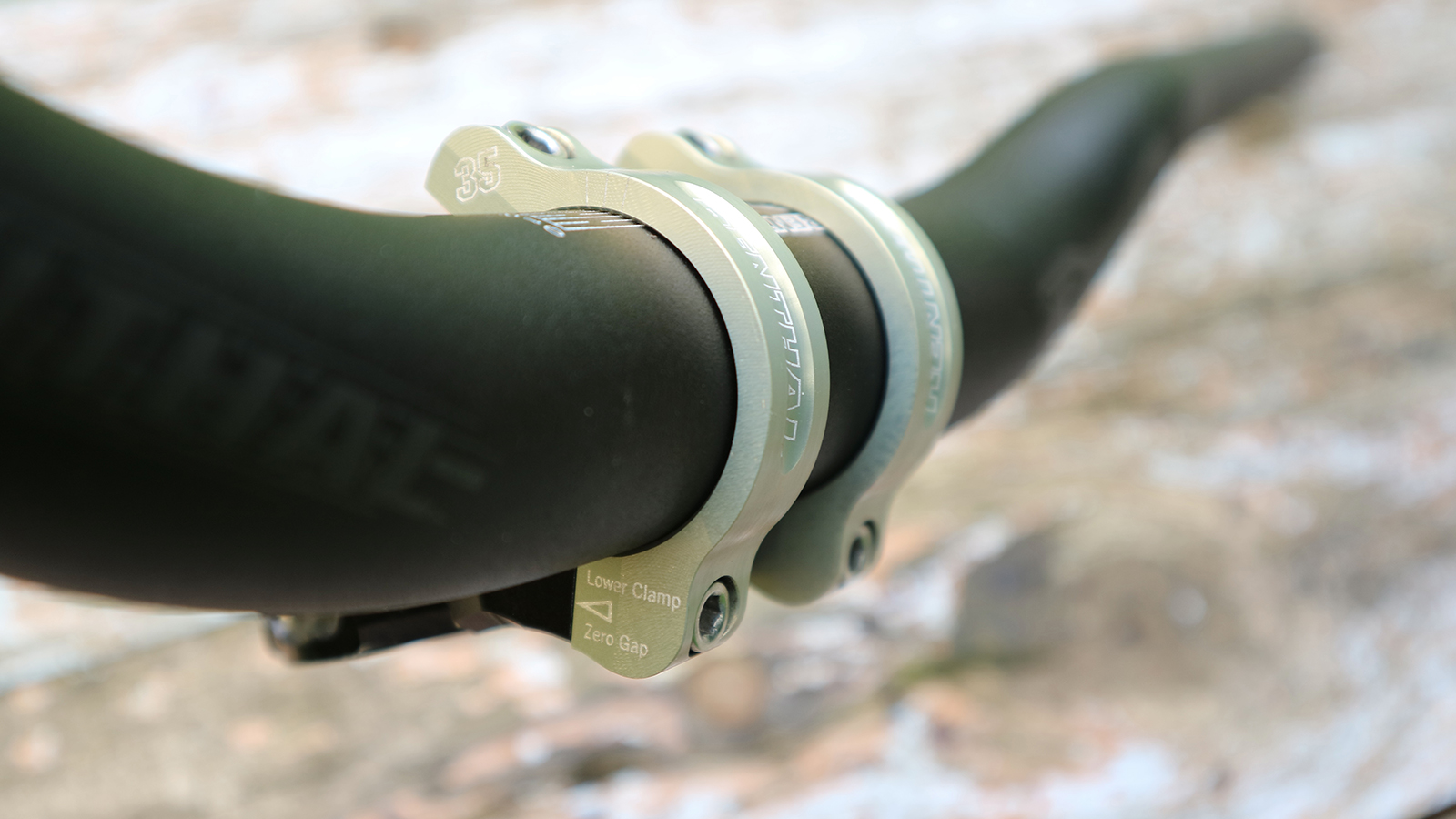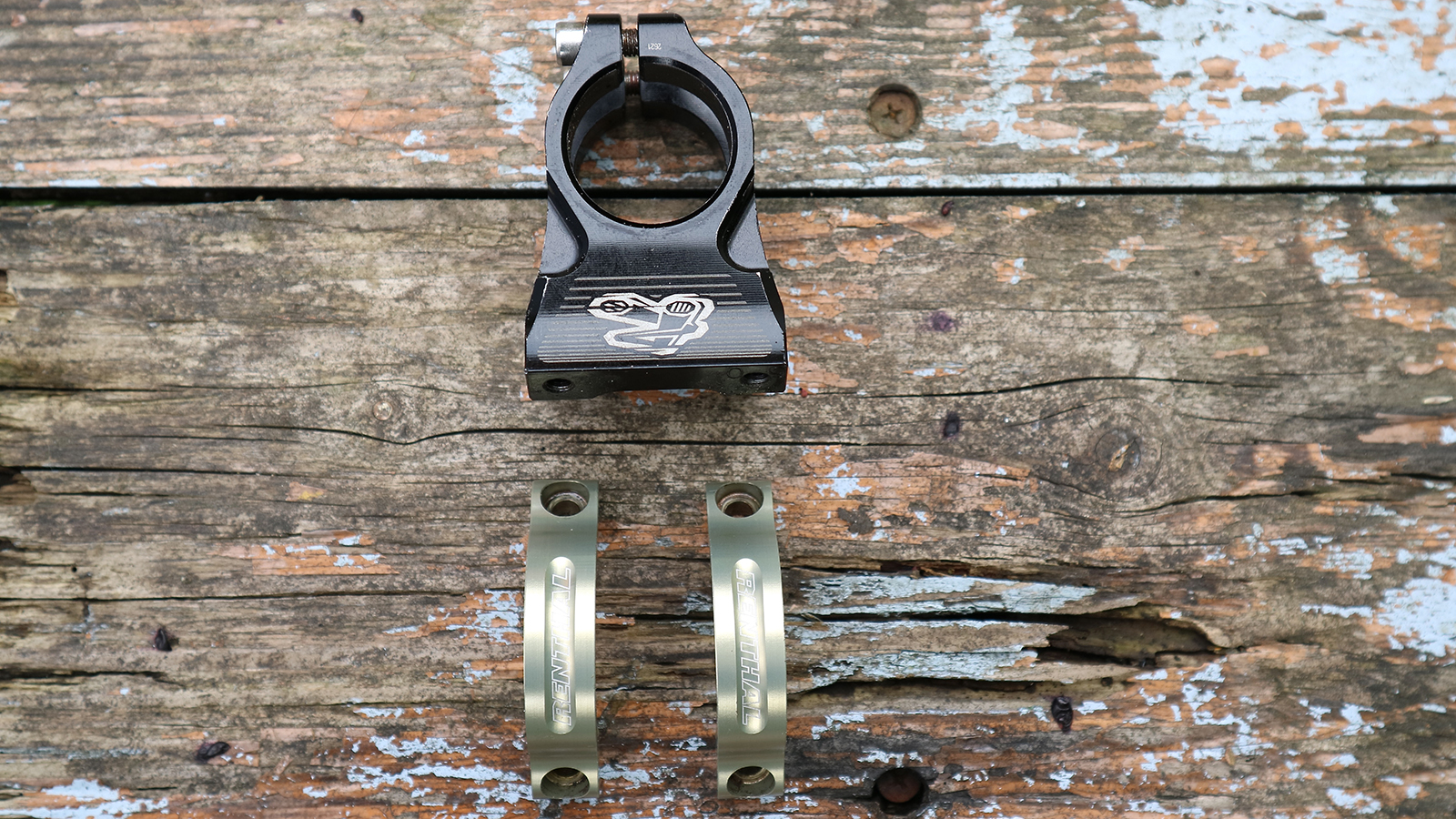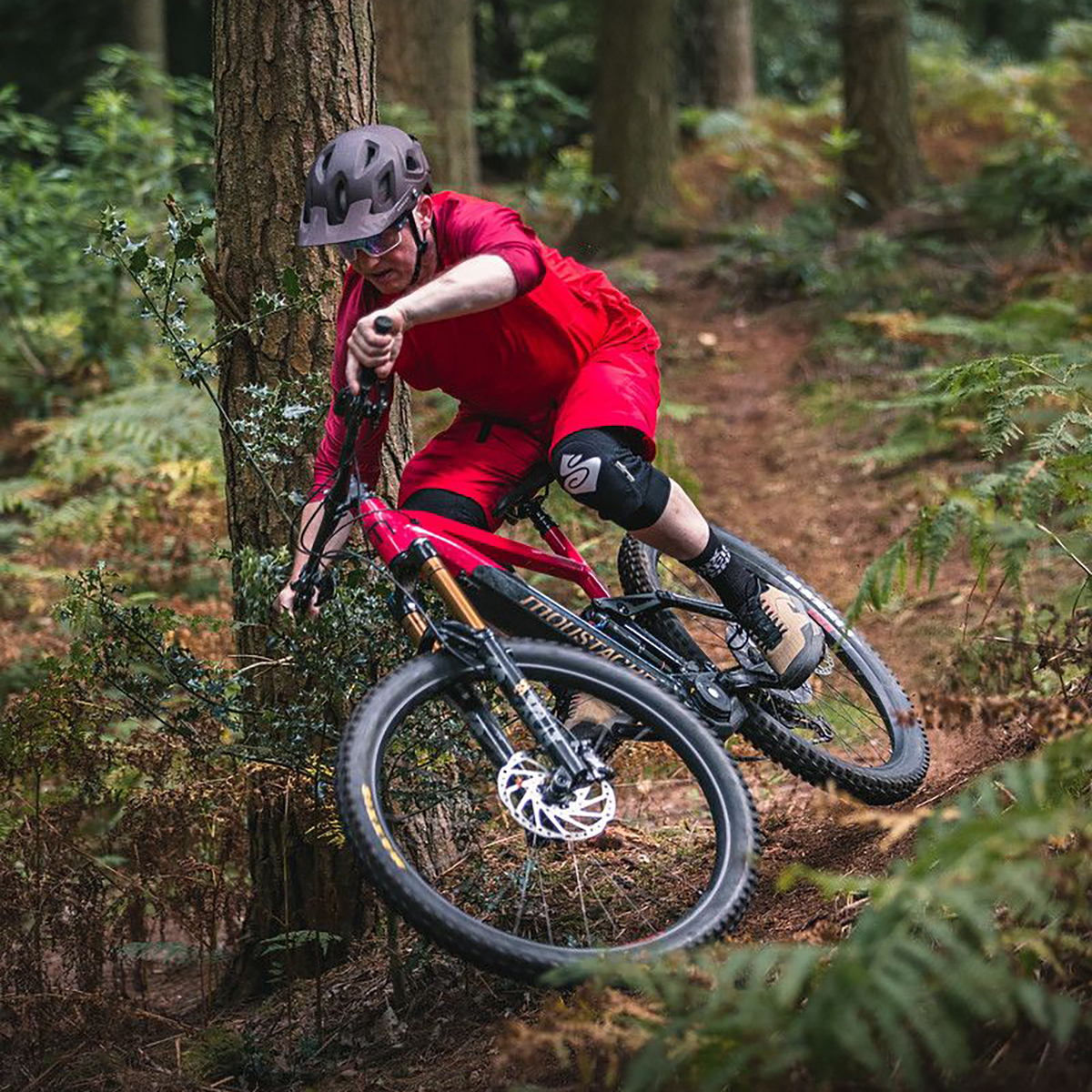Bike Perfect Verdict
The devil is in the detail and every single element of the Renthal Apex 35 is considered – it’s made from high-spec alloy, it’s hard anodizing, and has a clever design that maximizes stiffness and strength, while trimming as much fat as possible. It’s expensive and setup is slightly more involved but it's a great stem for trail, enduro and even XC use.
Pros
- +
Top-quality finish and 3D machining
- +
Clamp gradients aid repeat setup
- +
One of the shortest lengths possible
Cons
- -
Fiddly to fit
- -
Premium price compared to the competition
Why trust BikePerfect
UK component company Renthal provides handlebars and stems to some of the very best downhill and enduro racers on the planet and you can easily tell they’re riding Renthal because they’re often on the top step of the podium. Hidden behind a number board on a lot of pro bikes is the Apex 35, an oversized stem with a distinctive clamping system and incredibly light weight.

Design and specifications
Usually, a faceplate goes straight onto the front of most stems and covers 180-degrees but the Apex 35 has bigger faceplate clamps with a 240-degree wrap. This design allows Renthal to make the body of the stem a bigger diameter to increase stiffness while saving as much weight as possible. Compared to the Deity Copperhead the Apex 35 is 30g lighter, which is not a lot in the grand scheme of things, but it is a 20 percent saving and that is significant.
The other cool feature of the twin clamps is they use a zero-gap design. This isn’t unique to Renthal – Race Face, Easton and plenty of others have stems with this feature. Zero-gap means the clamps on the Apex close fully at the bottom and then you simply snug up the top two bolts using a crisscross process. The advantage of the design is it simplifies setup because you just bottom out the lower bolts to correct torque and then ensure even tightening of the top two. When a fastener is threaded all the way through the clamp it makes it stronger, there is less stress on the bolts, and you also reduce the risk of rounding a bolt head or clamping the faceplate unevenly.
Unlike most stems where the no-gap design is at the top, the cosmetic advantage is somewhat with the Renthal, but you can flip the stem to change the orientation, although that does mean the writing on the clamps will be upside down.
With Renthal’s 240-degree wrap, you do need to slide the clamps along the bar from the smaller diameter 22.2mm section before you can bolt them in place. If you’re using a carbon handlebar or one with that textured paint in the center, you need to be careful not to scuff the surface with the precisely machined clamps. Any grit or dirt in there is also going to make things worse.
The Apex 35 stem is CNC machined from a heat-treated 2014-series aluminum (the clamps are a 7075 alloy) and like most Renthal parts, it is hard anodized which is extremely hard-wearing. The Apex is available in four lengths, a single 6-degree rise and either 31.8mm or 35mm clamp size.

Performance
In the old days when we were riding around on bikes with 120mm stems and longer, you could tell if a stem was a noodle. Due to changes to steering geometry however, modern trail bikes now come with shorter stems in the 32mm to 50mm range, and as they’ve gotten closer in length, they’re now closer in stiffness and strength. The steering response with the Apex is very good and it feels solid on the bike. There’s a slight amount of torsional flex, especially when really wrenching on the bar, but on a stiff, carbon-framed e-MTB with carbon wheels, a little bit of flex is no bad thing as it improves ride feel.
The Apex isn’t as sleek or as good value as the Deity Copperhead or Race Face Turbine and needs careful setup, but if you want the lightest 35mm trail stem on the market this is right up there. Our only other negative point is the stem is a little bit tall and, while you can flip it to access a negative rise, when we did that on our test bike we found that the clamp fouled on the headset. Obviously, a lot depends on your bike, but a 0-degree rise would offer a little more clearance and you could still change the effective rise by adding spacers or running a deeper handlebar.

Verdict
This is a superbly well-crafted and designed product that will easily see years of sterling service. It does require careful setup, but the no-gap system does simplify a certain element of that process. The Apex 35 is a bit more money than most but it’s light, strong and versatile.
Tech specs: Renthal Apex 35 stem
- Price: $140.45 / £116.95 / €134.99
- Rise: +/- 6 degree
- Weight: 116g (33 x 35mm)
- Lengths: 33, 40, 50 and 60mm (35mm) 31, 40, 50 and 60mm (31.8mm)
- Materials: 2014-series aluminum body, 7075-series aluminum clamps, steel hardware

Paul has been testing mountain bikes and products for the best part of 30 years, he’s passed comment on thousands of components and bikes, from the very first 29ers and dropper posts to latest e-MTBs and electronic drivetrains. He first put pen to paper for Mountain Bike International magazine but then contributed to What Mountain Bike, Cycling Today and Cycling Weekly magazines before a 20 year stint at MBR magazine. An ex-elite level XC racer, he’s broken more bones than records but is now sustained on a diet of trail building, skills coaching and e-bike trail shredding.

